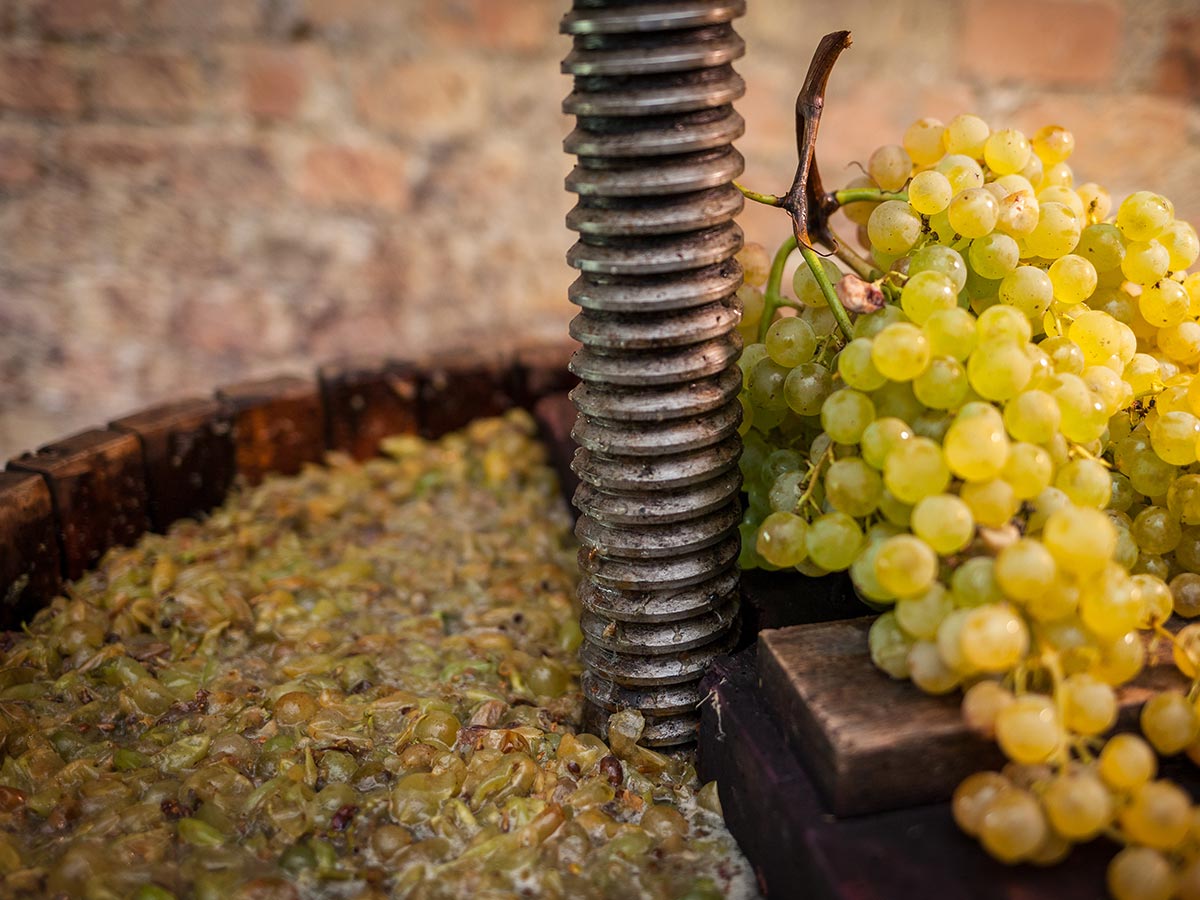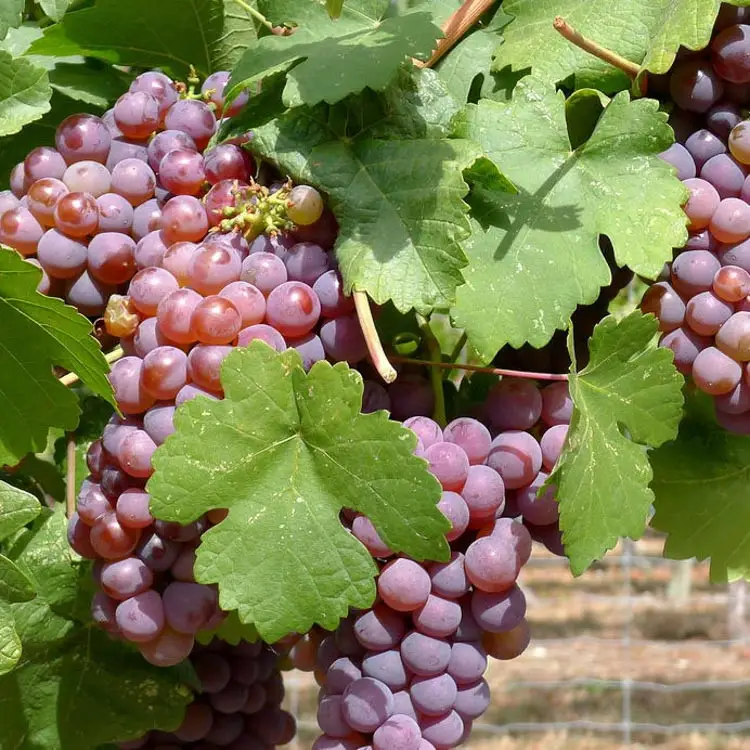Brandy production is a complex and long process. The quality of cognac largely depends on the composition of raw materials – grapes and oak wood, the flow of technological processes – from the moment of grape processing, the processing of the must to the release of the finished product.
Cognac is an alcoholic drink with a characteristic bouquet and taste, made from brandy alcohol obtained by the fractional distillation of special cognac wines and aged with oak wood for at least three years.
01
Grapeharvesting
The delicate bouquet, taste and smell of cognac is obtained from grapes grown in the soils rich in phosphorus and calcareous carbonates of the Ararat Valley.
To obtain and control the delicate bouquet and taste of cognac, our company has established its own vineyards covering approximately 1,000 hectares. As a result, the plant processes more than 15,000 tons of grapes annually, exclusively cultivated grape varieties “Kangun”, “Mskhali” and “Meghrabyur”.


02
CRUSHING,, FERMENTATION
The factory receives the best bunches of grapes, checking the quality characteristics. Harvesting is done around the clock. After that, only it is poured into the crushing machine. Due to the gentle pressing, the juice of the hungry grapes is obtained, preserving the rich aroma and delicate taste of the grapes.
After that, Kakhtsu undergoes self-fermentation, that is, yeasts are not added, but they are left to ferment on their own with their natural yeasts, this method of fermentation is also performed at the Avshar winery. The goal is to have a richly distilled wine with a minimum maturation period of one month. At the Avshar winery, the wine is ready in November, and distillation begins in March.
Distillation of wine is one of the most responsible stages of cognac production. At the factory, the wine is ready in November, distillation begins in March. This makes the wine fuller, giving the brandy wine both a taste and smell advantage. In March it is sent for distillation. Distillation of wine is one of the most responsible stages of cognac production. Brandy wine (alcohol) must contain necessary substances, which contribute to the formation of taste, smell, bouquet and other characteristics of brandy during aging.
03
DISTILLATION
Distillation is a process in which the components of the wine are separated from the lees. As a result, a wine distillate is obtained. The quality of the cognac depends on the successful distillation of wine materials. Neither providing the aging conditions nor increasing the aging time can ensure high quality brandy if the distillation of wine is not done correctly. Distillation technology schemes should serve the main purpose of preserving and collecting high-value wine distillate materials.
The distillation process is complicated. It is carried out with Charant type apparatus (French technology), as a result, a 66 percent alcohol solution is obtained, which is the distillate of wine. There are substances that arise during the distillation of wine that require a copper surface.


04
AGING
Cognac production is based on the aging of wine distillate in the presence of oak wood. As a result of aging, the distillate becomes darker, acquires a golden shine and all the substances necessary for cognac.
During aging, two processes take place, on the one hand, oak wood materials are dissolved in alcohol, and on the other hand, oxidation takes place, which requires the presence of oxygen.
The presence of oxygen in oak barrels and butts is ensured by natural means, that is, the oxygen from the outside passes inside through the oak wood, and there the oxidation process takes place continuously and high quality young alcohol is obtained.
All cognac spirits are aged in oak barrels, but even they can give completely different taste characteristics to the strong drink.
05
Finishedproducts
Cognac is made during coupage, various types of wine distillates, water, coloring matter (not allowed for 25 and over cognacs) and sugar syrup participate in coupage.
The quality of brandy largely depends on the quality of the distillates included in its composition. The higher the number of distillates, the richer the brandy.
When choosing distillates, one should take into account their average age and the maximum age allowed to make brandy of a given age.

Served in special glasses called snifters, into which brandy is poured to its widest point. On average it is 50 grams. If the temperature of the cognac is below 20 degrees, it is warmed by hand warmth. We bring brandy snifters to the mouth, and they first feel the aroma, then take it into the mouth with the calculation that the entire surface of the mouth is in contact with the brandy, after drinking, we pay attention to the aftertaste. The softer and longer it is, the higher the quality and age of the cognac.





